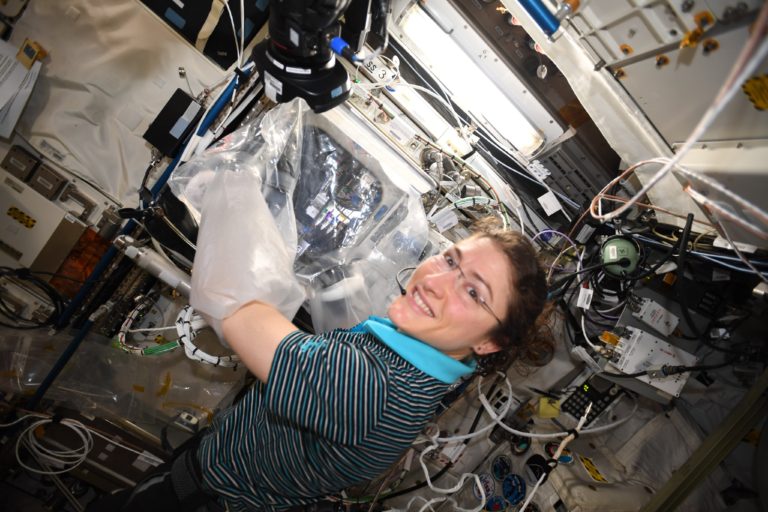来自大学,机构和医院的全球研究人员和科学家集体已经聚集在一起,为3D生物打印提供了路线图。
Published in生物制造,本文详细介绍了当前生物打印状态,包括该技术在选定应用中的最新进展以及当前的发展和挑战。它还设想了该技术将来如何改进,并详细介绍了创建路线图的研究。
每位作者都采用生物打印技术的各个方面,以关注研究中。具体而言,这些主题范围从细胞扩张和新型生物学开发到细胞/干细胞打印,从基于器官的组织组织到人类尺度组织结构的生物印刷,从构建细胞/组织/器官/A-A-Chip到生物制造多细胞工程生活系统。
Explaining the need for the bioprinting roadmap, the authors explain in the abstract of the paper that: “Due to the rapid pace of methodological advancements in bioprinting techniques and wide-ranging applications, the direction in which the field should advance is not immediately clear.”
“This bioprinting roadmap addresses this unmet need by providing a comprehensive summary and recommendations useful to experienced researchers and newcomers to the field.”

The bioprinting roadmap
In the introduction of the paper Wei Sun, chair professor of the College of Engineering from Drexel University, in Philadelphia, and Tsinghua University in Beijing, China, explains the challenges that must be overcome in bioprinting in general. These revolve around the creation of a new generation of bioinks better equipped for transporting, protecting, and growing cells; improved bioprinting processes; effective crosslinking; and integration with microfluidic devices to provide a long-term and a simulated physiological environment for culturing bio printed models.
The first section, “From cell expansion to 3D cell printing,” discusses the importance ofcell expansion in the bioprinting process. It states that bioreactor-based cell-expansion systems need to be improved to increase the adoption of bioprinting in regenerative medicine and tissue engineering product markets. Bioreactor-based systems are able to expand cells much faster than traditional methods leveraging flat culture plate solutions.

Moving on, the authors also take a look at the state ofbioinks, critical to the bioprinting process. Despite significant progress in engineering bioinks for bioprinting, the paper states that further advances in the field are needed to facilitate the encapsulation of cells in microenvironments enabling improved replication of native tissues, organs, and their complexities.
Another topic covered is thebioprinting of stem cells. This is a field that maintains “great promise for biomedical research and applications, owing to their strong renewability as a cell source, and potential to differentiate and mature into many cell types in the human body,” according to the researchers. However, a number of hurdles and challenges remain to be overcome before the full potential of stem cell bioprinting can be realized. These hurdles are summarized into three areas: the physical printing effects stem cell bioprinting; the properties of the bioink; and the biological challenges of 3D cultured stem cells. Recently, researchers from the多伦多大学(UoT) andSunnybrook Health Sciences Centredeveloped a handheld device capable of3D bioprinting sheets of stem cells可以治愈烧伤伤口。

The next frontier for bioprinting
该论文继续讨论了“器官或细胞聚集体的大规模,有效产生”。器官are useful in that they effectively mimic the physiological microstructures of in vivo tissue or organs. A significant obstruction to the large-scale production of organoids is the high production costs and difficulty associated with producing them.
研究人员还探索3D印刷生物杂交组织作为研究疾病的体外生物学模型。他们解释说,3D生物打印具有通过能够通过准确的细胞空间排列来快速制造组织来创建更好疾病模型的潜力。在体内组织评估药物反应的许多功能未能成功复制in bioprinting. This includes multiple-layered barrier functions to control the transdermal delivery of external-use drugs, which the researchers believe can be replicated by creating 3D printed biohybrid tissues.
以及进一步探索组织装配,organ-on-a-chip development, and multicellular engineered living systems, the paper also delves into bioprinting in outer space. Thanks to microgravity, one advantage of bioprinting in space is the creation of bioprinted constructs with more fluidic, biocompatible bionks. Additionally, microgravity conditions allow for the 3D bioprinting of tissue and organ constructs with more complex geometries, like voids, cavities, and tunnels.

Such an endeavor is already being explored by several research groups and companies in the USA, European Union, Russia, and China, who are actively preparing the necessary research infrastructure and devices for bioprinting in space. For example, the3D BioFabrication Facility(BFF)生物生产商nScryptandTechshotiscurrently onboard国际空间站(ISS). This week, a payload containing3D打印物资for the BFF was delivered to the ISS, holding samples of human cells, bio-inks, and a set of new 3D printed ceramic fluid manifolds to replace the previously used printed polymers.3D生物打印溶液, a Russian bio-technical research laboratory also has its magnetic3D bioprinter Organ.Autonboard the ISS. The company was recently able to 3D bioprint bone tissue in zero gravity.
“The bioprinting roadmap” is published in生物制造,由许多作家撰写,包括北卡罗来纳州立大学机械工程教授比尼尔·斯塔利(Binil Starly);杰森·伯迪克(Jason Burdick),宾夕法尼亚大学的生物工程师;英国Maverex的生命科学医学作家Gregor Skeldon;Wenmiao Shu,格拉斯哥Strathclyde大学生物医学工程教授;埃默里大学医院的骨科外科医生安德鲁·戴利(Andrew Daly);JürgenGroll,德国Würzburg大学医学和牙科功能材料教授;Pohang科学技术大学机械工程师Dong-Woo Cho;3D Bioprinting Solutions的首席科学官Vladimir A. Mironov。
The nominations for the2020 3D Printing Industry Awards现在打开。您认为谁应该成为今年演出的入围名单?现在有你的发言权。
Subscribe to the3D打印行业通讯for the latest news in additive manufacturing. You can also stay connected by following us on推特并喜欢我们Facebook。
Looking for a career in additive manufacturing? Visit3D打印作业在行业中选择一系列角色。
Featured image shows advances in bioprinting. Image via Biofabrication.


